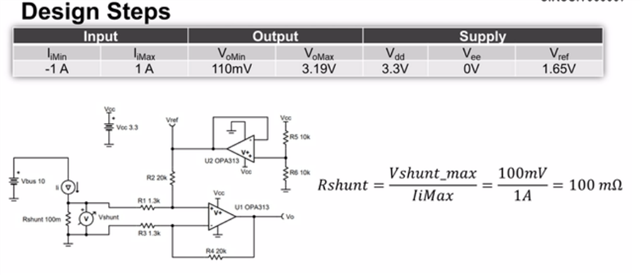Other Parts Discussed in Thread: LM324-N, TL7726
Hi,
Low-side, bidirectional current-sensing circuit | TI.com Video
In this training video, I feel confused about the reason to choose Vshunt maximum as 100mV, and also confused about this part of transcript 'In low-side current sensing applications, it's common to set the maximum shunt voltage so that the load's ground potential is nearly equal to that of the op-amp and ADC.'
I have no idea about why if we choose maximum shunt voltage(100mV here) so the load's ground is equal to OP and ADC's.
Could u please help to clarify it ? Thanks!


